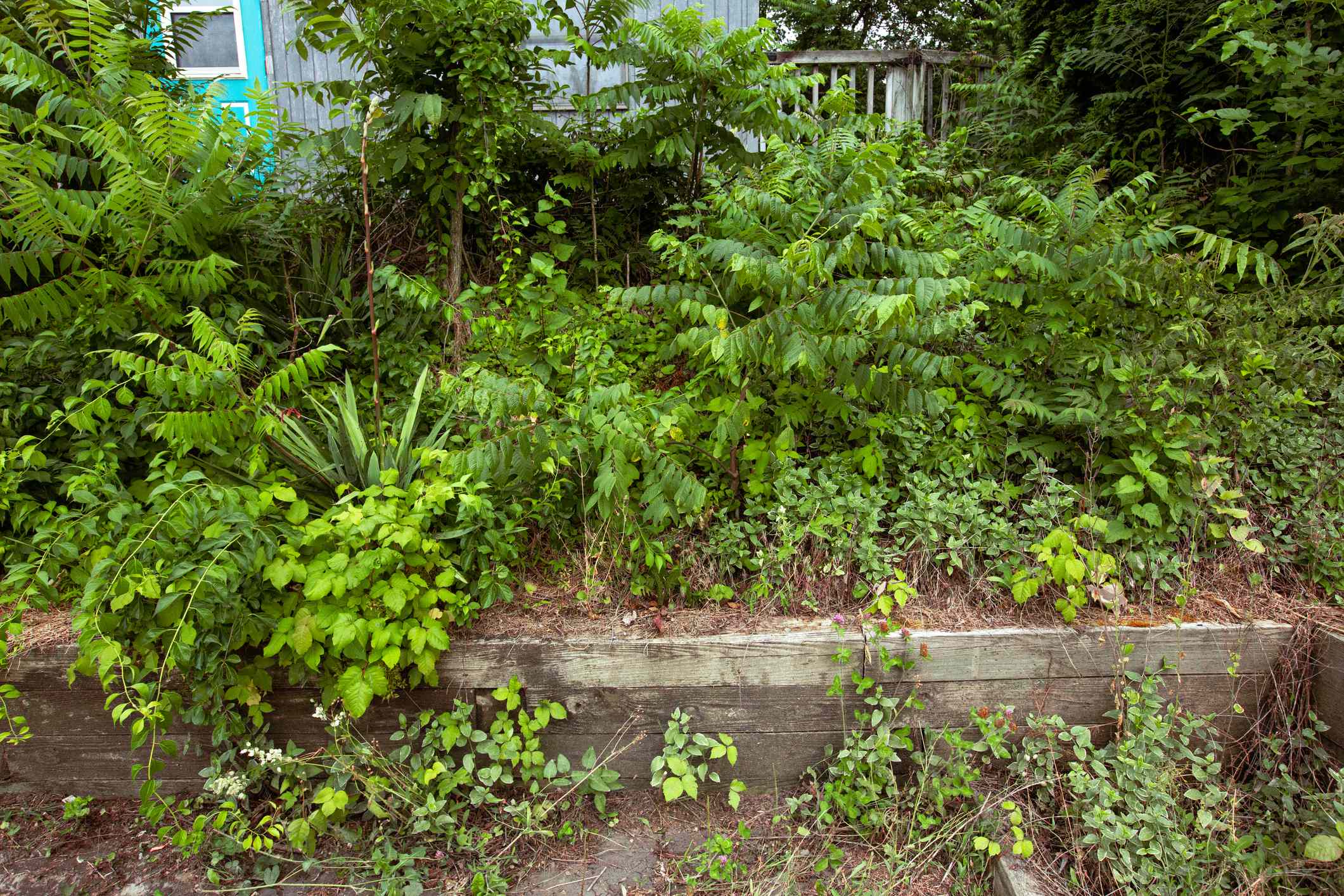Key Points
- Invasive plants spread aggressively, disrupting local ecosystems and often becoming impossible to control.
- Identifying them can be tricky—check with local extension offices or invasive species hotlines to be sure.
- There are many proven methods for removing invasive plants, depending on the kind you have.
Most home gardeners garden in their free time for fun, but one thing can turn your relaxing hobby into a nightmare: an invasive plant. Invasive plants are plants that are non-native to your area and spread rapidly, but not all non-native plants are invasive—and invasive plants vary by region.
It can be hard to tell if you have an invasive plant growing in your garden, so we talked to a pro about why you shouldn’t grow them and how to get rid of them.
Why You Should Never Grow an Invasive Plant
Christopher Fairweather / Getty Images
According to Christy Whilhelmi, growing invasive plants can crowd out native species, changing the surrounding ecosystem. There are two specific kinds that she sees often in California: Mexican feather grass and fountain grass.
“I wish nurseries would stop selling them altogether,” she shared. “Just check out the hills next time you’re on the highway anywhere in Southern California. Both of these plants have taken over every stretch of land as far as the eye can see.”
So, how do you know if there are invasive plants in your yard?
Want more gardening tips? Sign up for our free gardening newsletter for our best growing tips, troubleshooting hacks, and more!
How to Tell If There Are Invasive Plants in Your Yard
If you think you might have invasive plants in your yard but you aren’t quite sure, you’re not alone—many invasive plants can produce copious amounts that can spread long distances, meaning they could’ve traveled from someone else’s yard to yours.
You can reach out to your local invasive species hotline for help with identifying invasive plants on your property, reach out to college or university extension offices, or you can reach out to local groups that may be able to help.
How to Get Rid of an Invasive Plant
If you’ve identified invasive plants in your garden and are looking to get rid of them, there are multiple methods you can try.
The key to stopping the spread of invasive plants is ensuring there are no seeds. Regularly mowing your lawn—or cutting back new growth, depending on the kind of invasive plant—can prevent some invasive species from maturing enough to produce seeds at all.
For most invasive plants, digging out the entire plant, roots and all, can be enough to get rid of them entirely—but that all depends on proper disposal and making sure there isn’t an opportunity for seeds to germinate elsewhere.
For grasses, you can also lay a tarp over them to smother them out.
When all else fails, herbicides are also always an effective option for killing invasive plants over large areas—just be sure to carefully read the care label and be mindful of other plants nearby that can be harmed.
How to Avoid Native Plants
Sometimes native plants can spread into your yard by birds, or even be tracked through on your own clothing. Other times, however, you could have brought the plant into your yard from a nursery without even knowing that it was invasive.
Like Whilhelmi says, the invasive plants in her area are sold by nurseries. Just because a nursery sells a plant doesn’t mean it should be grown in your area. It’s best to do a little research on invasive plants in your area before picking up anything on your next nursery visit.
The National Invasive Species Information Center has a list of invasive plants that you can look up by state—or you can check in with local university and college extension offices.











